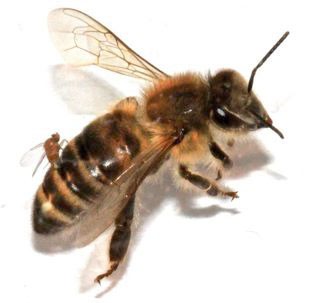Scientists have discovered how honeybees are being controlled by tiny flies, turning them into zombies as the bees stagger around flying, bumping into lights. The bee victims often fly at night, which is highly uncommon for bees where they buzz around lights then ultimately die.
This phenomenon is apparently not rare as bees from the U.S. West Coast have been observed as well as bees from the eastern states as researchers and volunteers are now tracking this sickness that has been plaguing the pollinators. In addition, in recent years, bee colonies have been suffering from a colony collapse disorder including vampire mites and malnutrition.
According to John Hafernik from the San Francisco State University, this is still not considered as a "doomsday bug" for bees however, this is an interesting take on how parasites appear to have an effect on bee behavior which force them to abandon their hives.
In 2012, Hafernik and his team began a project called ZomBee Watch so that volunteers can monitor the spread of these "zombie bees". The participants are required to upload photos of bees along with the parasite fly pupae and the adult flies, which now totals to more than 100 confirmed cases.
This parasite fly is also known to victimize bumblebees and yellow jacket hornets where Hafernik discovered these zombie bees in 2008 when he observed some disoriented bees outside his campus office, hovering in bizarre flight patterns beneath a light. Upon closer inspection, pupae emerged from a bee.
The first zombie honeybee cases were mostly observed from the San Francisco area where researchers believe that Apocephalus borealis flies target and attack bees as they forage for food. The flies apparently pierce the bee abdomens and lay their eggs inside, that affects the behavior of the unfortunate bees.
However, cases of these zombie bees have been observed elsewhere in the east In Burlington, Vermont in 2013 and last summer, in Hurley, New York and Hudson Valley, north of New York City where scientists suggest that this phenomenon might be linked to colony collapse disorder.



























